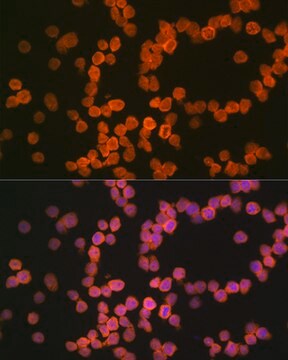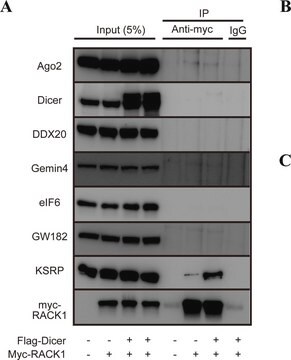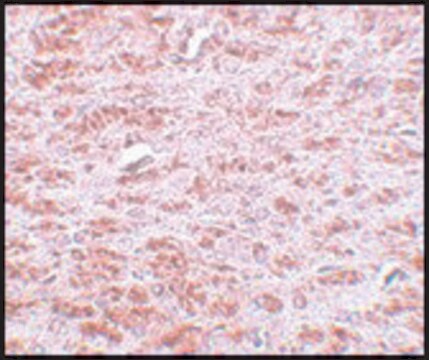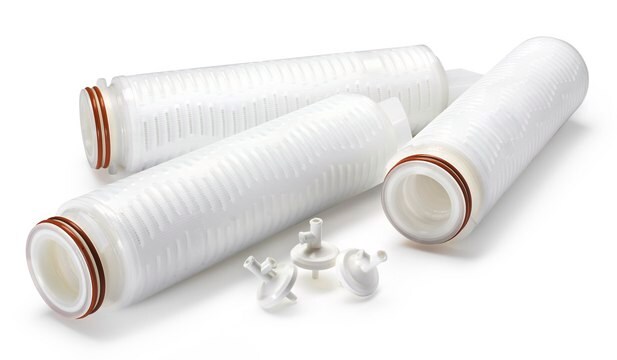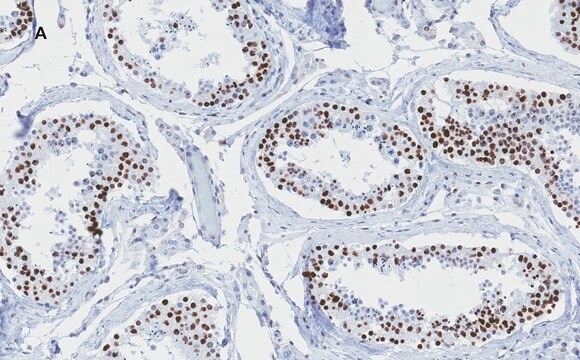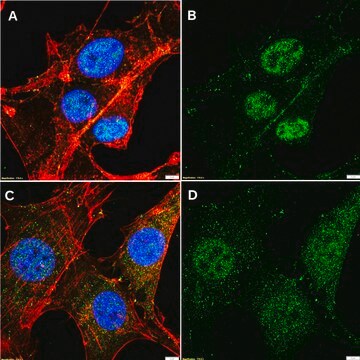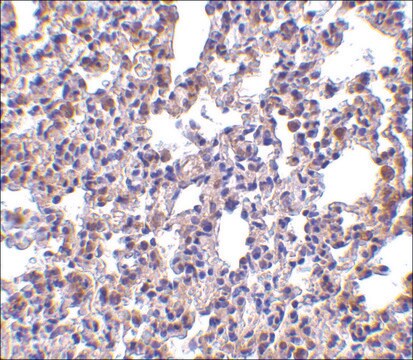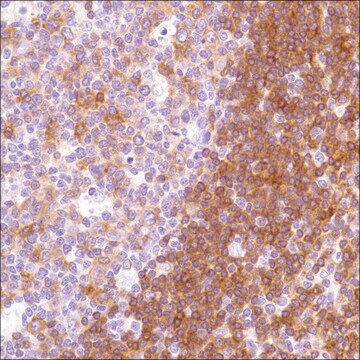SAB4700117
Monoclonal Anti-CD20-FITC antibody produced in mouse
clone 2H7, purified immunoglobulin, buffered aqueous solution
Sinónimos:
Anti-MS4A1
Iniciar sesiónpara Ver la Fijación de precios por contrato y de la organización
About This Item
Código UNSPSC:
12352203
NACRES:
NA.44
Productos recomendados
origen biológico
mouse
Nivel de calidad
conjugado
FITC conjugate
forma del anticuerpo
purified immunoglobulin
tipo de anticuerpo
primary antibodies
clon
2H7, monoclonal
Formulario
buffered aqueous solution
reactividad de especies
human, nonhuman primates
técnicas
flow cytometry: suitable
isotipo
IgG2a
Nº de acceso NCBI
Nº de acceso UniProt
Condiciones de envío
wet ice
temp. de almacenamiento
2-8°C
modificación del objetivo postraduccional
unmodified
Información sobre el gen
human ... MS4A1(931)
Descripción general
CD20 is a cell surface 33-37 (depending on the degree of phosphorylation) kDa non-glycosylated surface phosphoprotein expressed on mature and most malignant B cells, but not stem cells or plasma cells (low number of the CD20 has been also detected on a subpopulation of T lymphocytes and it can be expressed on follicular dendritic cells). Its expression on B cells is synchronous with the expression of surface IgM. CD20 regulates transmembrane calcium conductance (probably functioning as a component of store-operated calcium channel), cell cycle progression and B-cell proliferation. It is associated with lipid rafts, but the intesity of this association depends on extracellular triggering, employing CD20 conformational change and/or BCR (B cell antigen receptor) aggregation. After the receptor ligation, BCR amd CD20 colocalize and then rapidly dissociate before BCR endocytosis, whereas CD20 remains at the cell surface. CD20 serves as a useful target for antibody-mediated therapeutic depletion of B cells, as it is expressed at high levels on most B-cell malignancies, but does not become internalized or shed from the plasma membrane following mAb treatment.
Especificidad
The antibody 2H7 reacts with CD20 (Bp35), a 33-37 kDa non-glycosylated membrane receptor with four transmembrane domains, expressed on B lymphocytes (it is lost on plasma cells), follicular dendritic cells, and at low levels on peripheral blood T lymphocytes.
Inmunógeno
Human tonsillar B cells
Aplicación
The reagent is designed for Flow Cytometry analysis of human blood cells using 20 μL reagent / 100 μL of whole blood or 1e6 cells in a suspension. The content of a vial (2 mL) is sufficient for 100 tests.
Características y beneficios
Evaluate our antibodies with complete peace of mind. If the antibody does not perform in your application, we will issue a full credit or replacement antibody. Learn more.
Forma física
Solution in phosphate buffered saline containing 15 mM sodium azide and 0.2% high-grade protease free BSA as a stabilizing agent.
Cláusula de descargo de responsabilidad
Unless otherwise stated in our catalog or other company documentation accompanying the product(s), our products are intended for research use only and are not to be used for any other purpose, which includes but is not limited to, unauthorized commercial uses, in vitro diagnostic uses, ex vivo or in vivo therapeutic uses or any type of consumption or application to humans or animals.
¿No encuentra el producto adecuado?
Pruebe nuestro Herramienta de selección de productos.
Código de clase de almacenamiento
10 - Combustible liquids
Clase de riesgo para el agua (WGK)
WGK 2
Punto de inflamabilidad (°F)
Not applicable
Punto de inflamabilidad (°C)
Not applicable
Elija entre una de las versiones más recientes:
¿Ya tiene este producto?
Encuentre la documentación para los productos que ha comprado recientemente en la Biblioteca de documentos.
Jessica L Teeling et al.
Journal of immunology (Baltimore, Md. : 1950), 177(1), 362-371 (2006-06-21)
We have previously defined a panel of fully human CD20 mAb. Most of these were unexpectedly efficient in their ability to recruit C1q to the surface of CD20-positive cells and mediate tumor lysis via activation of the classical pathway of
Nuestro equipo de científicos tiene experiencia en todas las áreas de investigación: Ciencias de la vida, Ciencia de los materiales, Síntesis química, Cromatografía, Analítica y muchas otras.
Póngase en contacto con el Servicio técnico